Earlier this month, Paper Mario: The Origami King was released for the Nintendo Switch. Designed as Nintendo’s big title for the 2020 summer season, the game aimed to take the series back to its roots in many ways, with a new villain, story and characters closer in style to the original titles.
That’s quite an undertaking for a game like this, especially after two games of questionable quality that fans and critics didn’t really take too that well.
So how does it do? Does Paper Mario: The Origami King manage to live up to the original games in terms of quality?
Well in our eyes, the answer is indeed yes. In fact, I was pleasantly surprised at just how well the characters and story worked in this game, as well as how engaging everything from the world exploration to the boss battles really were.
It truly is the best game in the series since Super Paper Mario, and one that Nintendo are significantly underselling with their current marketing campaign too.
Let me explain why that is…
Starting with the aesthetics. As you’d expect from a game like this, Paper Mario: The Origami King looks absolutely stunning, and may well be one of the best looking games on the entire Switch console.
Seriously, it can’t be stated enough just how well the papercraft art style works for this one, and how fantastically designed the world is in general here. From Toad Town to Autumn Mountains, Shroom City to Shangri-Spa, everywhere you go looks like a gorgeously done diorama that someone really could build in real life right now. It’s incredible, and it really is the best ‘crafted’ style game Nintendo has ever made on a visual level.
But don’t worry old school Paper Mario fans. This game’s papery aesthetics aren’t used at the expense of a more immersive world in any way whatsoever.
Oh no. In fact, by some miracle or another, Paper Mario: The Origami King actually makes to make a papercraft world feel like a real place people live in.
And that’s in part because it really breaks away from the linear, course style design of the previous games. Whereas those games had level separated on a map with a clear entrance and goal, the ones in the Origami King feel like genuine places that are put of the same, completely interconnected world.
Such as the Scorching Sandpaper Desert, whose ruins feel like they’ve been around for thousands of years despite everything seemingly being made of cardboard. Or the areas in the Great Sea (like Diamond Isle and the Sea Tower), both of which feel like remnants of an ancient civilisation straight out of the Legend of Zelda The Wind Waker.
So even though you can see paper elements in pictures, it’s immersive enough you’ll forget about them once you’ve started playing, and just treat Origami King’s word like the Mushroom Kingdom in the 64 game or Rogueport and surrounding areas in Thousand Year Door.
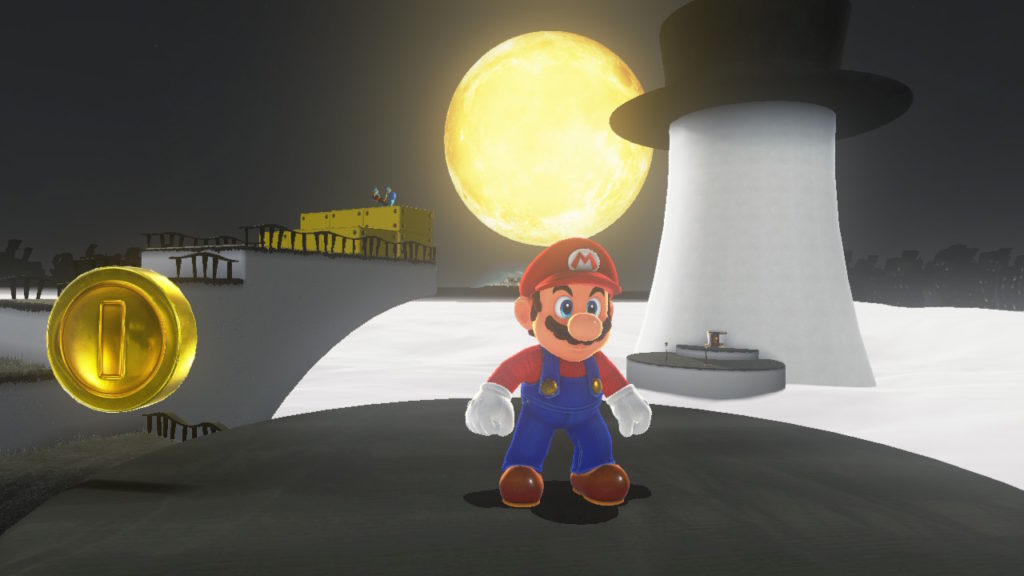
Origami King’s areas are so well designed in fact that they actually feel more like places than the kingdoms in Mario Odyssey do…
The characters look pretty good too. They’ve obviously got the traditional Paper Mario look to them, but they’re a lot more detailed and expressive looking in this game too, with even fairly basic designs like Bobby’s managing to make you feel a real connection to them as characters.

Bobby may have a simple design, but he’s full of character in terms of how he’s animated
Of course, that brings us to the elephant in the room. The one thing that Paper Mario fans have been complaining about since Sticker Star.
Namely, the generic looking NPCs. The last few games have gotten absolutely torn to shreds due to their cast lists not looking all that interesting, with generic Toads making up 90% of the cast and other characters only adding a few random bits of clothing and details on top of that.
Unfortunately, while Origami King certainly improves on this, it doesn’t 100% fix it.
That’s because the characters in its world fall into one of two categories. The more interesting ones you interact with directly, and the background NPCs you see in various areas.
And the quality of the design differs wildly.
On the one hand, the background Toads you rescue in levels are generally fairly generic. They all look the same, have little personality, and even only fall into about 3 colour schemes too.
That’s disappointing. You won’t find any random misfits in the background here like you would in earlier games, nor will you encounter any obviously female Toads or ones which aren’t middle aged adults.
Don’t expect anyone like Dupree in Paper Mario: The Origami King
Yet at the same time though, the game does drastically improve the character designs for major characters, as well as ones with a distinct role in the story. Now Toad scientists and doctors dress like scientists and doctors, shopkeepers dress like shopkeepers and the folks in Shogun Studios actually dress for the part they’re playing.
And this alone is a huge improvement over Sticker Star and Color Splash. Seriously, compare the professor from Color Splash to the one in Origami King, then tell me which ones look more like a professor to you.
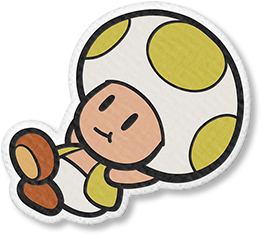
A plain yellow Toad, like the professor from Color Splash
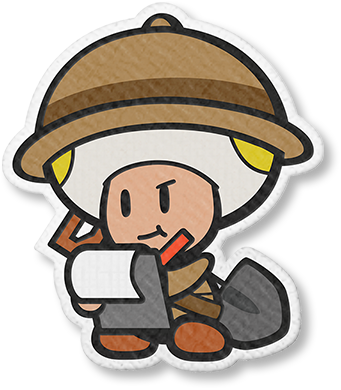
Professor Toad from Paper Mario: The Origami King
Yeah, it’s the latter. Professor Toad actually has an explorer’s outfit with shovel, whereas his Color Splash counterpart is nothing more than generic Toad #3587.
Hence it’s better here. The NPCs that matter do now actually look distinct, and they dress according to their proper roles.
It’s just the background characters look utterly forgettable in comparison to them, and don’t have anywhere near the level of charm their N64/GameCube era counterparts did.
What is better than earlier games though is the soundtrack. Dear god, the soundtrack in Paper Mario: The Origami King sounds absolutely divine.
Seriously, it’s some of the best music I’ve heard in a Nintendo game for a long time, and somehow manages to put even the likes of Paper Mario Color Splash and Super Paper Mario to shame on the music front. Like with the boss themes, which sound less like traditional Mario music and more like something from a heavy metal concert.
Such as the Scissors one, which underlies the boss’ lethal attacks with a tune that screams ‘you are going to die’, every four minutes. Or the Hole Punch tune, a theme so catchy the boss itself dances along to the music. From Coloured Pencils to Rubber Band, Tape to Stapler, every boss has a perfectly fitting theme that you’ll want to listen to time and time again.
Hell, even the mini bosses do. Who knew that the theme for a Sumo Bro battle would make Count Cannoli from Wario Master of Disguise jealous?

Or that even the various normal enemy battles could probably pass for boss themes in other games?

The non battle themes are equally good too. Whether it’s the beautiful Japanese style song played in Autumn Mountain, the funky songs from Shroom City or the many fantastic dungeon themes throughout the game, every single one is perfectly fitting for the area it plays in, and catchy enough to listen to outside of the game too.
Nintendo and Intelligent Systems really went above and beyond here, especially given that every little scene, room and moment has a song on par with the best of their other games before it. Thought they’d phone in the songs played during the Shy Guy Ballet or the Shroom City Hotel pool party?
Hell no!

Everything has to be memorable, no matter how little it’s played in the game.
That’s true of the script too. Whether its the characters you meet or the random scenes you encounter, the game is filled to bursting with humour and charm.
It’s honestly quite impressive really, especially given the limitations the game was supposedly made under. After all, most writers would seriously struggle to make the Legion of Stationery memorable. The idea of a hole punch or pair of scissors as unique characters with backstories and personalities is absurd.

Yes, a disco dancing hole punch can indeed be an interesting character
Yet this game manages it, and in such a way that a roll of tape has become a fan favourite and a pair of scissors has become of the scariest foes in the entire Mario series.
An Example Quote from Tape
You Mario? I got a message for you from the boss. How ’bout ya come over here so I can give it to ya?
And you, origami kid… Be a good goil and run back to Olly. It’s past your beddy-bye time, capisce?
You two were gonna try and take dis streamer out of the picture, eh?
I come in strips too, ya know. You got a grudge wit’ things dat wrap over other things? You think I’m some kinda JOKE? EH?
An Example Quote from Scissors
Let’s get this straight: I WILL annihilate you… but I don’t see why we can’t have some fun first.
After all, where’s the challenge in slicing you to strips immediately?
Therefore, I shall grant you… a slight advantage
See? My blades have been sheathed. We’re on an equal footing.
However! Should you damage this cover during our battle…
I shall interpret such boldness as a direct challenge, and I won’t hold anything back!
Hence on an aesthetic level everything is top notch. It looks great, it sounds great, and the humour is as always on point.
However, while the aesthetics are amazing, the gameplay is a bit of a mixed bag overall. Most notably, the battle system.
Or more precisely, the two battle systems. Since for one reason or another, the game has entirely separate systems for normal enemies and boss battles.
With the former having Mario in the centre lining up enemies in groups so he can take them all out in one attack, and the latter having him try to make a path to the boss in the centre.

A standard battle in Paper Mario: The Origami King
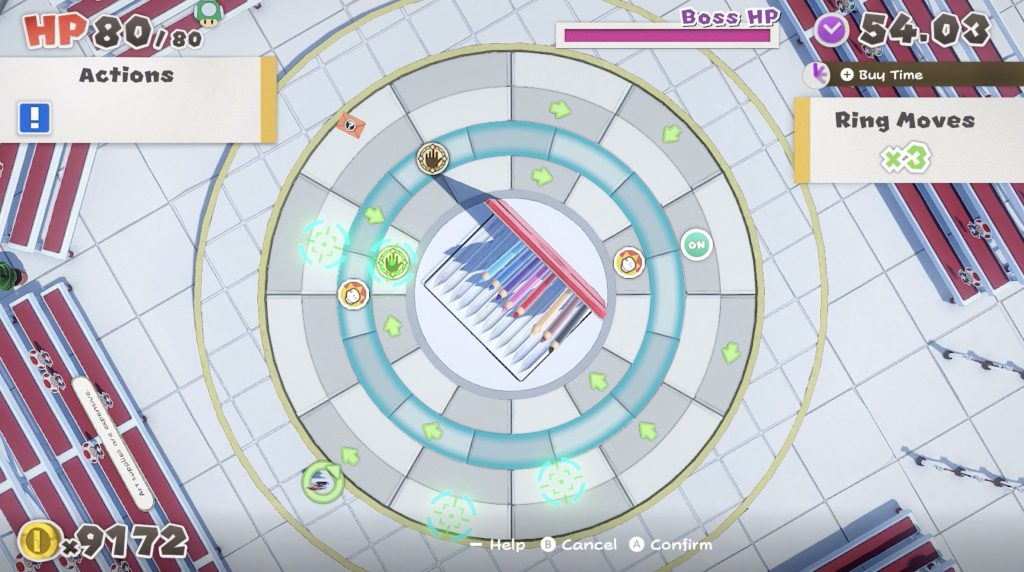
A boss battle in Paper Mario: The Origami King
They’re both interesting systems, and they both share the same basic ring moving mechanics.
But the way they play out changes drastically as you get further into the game, with the normal arguably getting worse and the boss one getting better.
That’s because while the latter gets more interesting with every Vellumental you defeat, the former ends up just becoming a tedious pain in the ass past around the third streamer. The battles that were previously quite easy to quickly clear now take a lot more thought, while the enemies themselves don’t get any more difficult.
And that’s in part because Mario in Paper Mario: The Origami King is a tank. He does absolutely tons of damage with every attack, while having enough HP and defence to survive pretty much anything a normal enemy can do in return.
Add this to the many healing items you get, the way the Toads can help you out if you start cheering and the accessories that make you even tougher, and well, the question is never about if you can win a battle. It’s just about how long it takes to do so.
Hence it becomes logical to skip most battles later on, and you even eventually get the ability to do so by defeating enemies on the overworld too.
Fortunately though, the boss battles are different, and are by far the highlight of the game.
Why? Because unlike with normal battles, they actually do something interesting with the ring system, and give you the ability to counter their attacks in different ways.
For instance, the Coloured Pencils boss targets various spaces on the board and will shoot Mario if he crosses them, whereas the Rubber Band boss will use rubber bands to affect which way Mario will go when he crosses them. This makes the setup more engaging, since you’ll need to use both the existing arrows/spaces and the boss’ geo effects in your battle.
As well as use their weaknesses and attacks to your own advantage too. This can be as simple as jumping on flying bosses to bring them down, to as complex as using a Velllumental attack to counter its special move, then ripping it apart when it knocks itself during the failed attack.
It’s then made even better by what the system doesn’t have. Namely, Things.
Yep, the old Thing system is a complete no show in this game. Now your attacks are either infinite use (basic attacks, Vellumentals, 1000-Fold Arms) or based on weapons with a Breath of the Wild style durability system.
This makes battles much more interesting. For starters, it means you can actually choose your own strategy this time around.
And that’s huge. In Sticker Star and Color Splash, battles were literally puzzles with one solution, with the game chiding you (at best) if you found another one. Don’t have the bone Thing? Can’t defeat Iggy. No cork? Then Larry is an unbeatable opponent in the Sunset Express level.

Caption: Especially as Replicas didn’t work against the bosses for whatever reason…
Origami King isn’t like that. Now you can beat any boss in the game with almost any combination of attacks you can think of, and it’s a lot more replayable as a result. There’s no need to use the Vellumentals or 1000-Fold Arms if you don’t want to, nor any need to ‘solve a puzzle’ to win a boss battle. As a result, the system is a lot more engaging than before, and replayable enough that a boss rematch mode actually exists in the Toad Town Battle Lab.
What’s less interesting however are the partners. Because in Paper Mario: The Origami King, they’re an absolute joke.
Like seriously. They don’t accompany you through more than one area of the game, they rarely have useful abilities on the overworld, and their usefulness in battle is fairly limited to boot.
As a result, they’re basically partners in name only. They follow you around a bit and do a single attack after yours, but that’s pretty much it.
Worse still, they don’t even help you during every area or battle either. No, many of them outright refuse to accompany you inside dungeons for… various reasons. Same goes for boss battles too, with all partners standing back and letting yo do all the work in them. This makes them much less useful than their old school counterparts, and means relying on them is a bad idea in general.
Still, it makes sense I guess.
After all, given most of these partners leave after a single chapter, having actual overworld content locked behind their abilities would just make for an unwinnable game. Plus given the sheer power of their attacks in battle, it’s likely you’d end up trivialising a lot of the more interesting fights if they were with you too, since your partner would probably end up nuking many of the Vellumentals and Legion members long before they got the chance to show off their special attacks/abilities/gimmicks.
You’d also need a lot more thought put into the boss system too, since bringing partners into them would probably require even more spaces to move around/place, more gimmicks to keep them somewhat balanced and potentially even more complexity if they don’t follow Mario’s path for whatever reason.
Regardless, it’s still disappointing, and makes them feel less interesting than those in 64 and Thousand Year Door as a result.
What doesn’t feel as disappointing however are the accessories. These are basically the badges from the older games, and can be equipped at any time to do things like increase your health or defence in battle, give you more hints on the overworld or reward you for walking a certain amount of steps or buying items in shops.
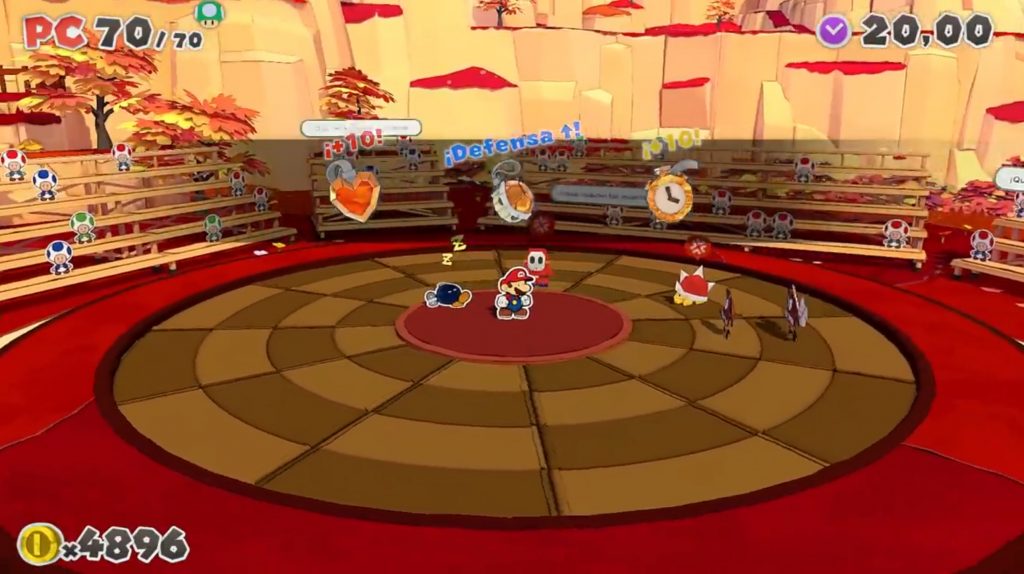
Your accessories will take effect as soon as the battle begins
It’s a neat addition, and while not as strategic as the ones in earlier games, still enjoyable enough to mess around with nonetheless.
Either way, battles are only part of the game here, with overworld exploration making up the rest of the picture.
And that’s really where the game shines overall. Why? Because those amazing looking areas are all really fun to explore here, and packed to the rafters with interesting puzzles, NPCs and secrets.
With one of the best aspects being that the entire world is completely interconnected this time around. Now, there’s no map screen at all, and going from area to area is merely a matter of walking, climbing or sailing there, like it was in more traditional RPGs like the Mario & Luigi series and Pokemon.
What’s more, we’re not talking linear corridors and pipes here. It’s not like in the Thousand Year Door where levels are accessed via pipes in the sewers, or Super Paper Mario where every level but the last is entered via a door in Flipside.
No, it’s done in a genuinely natural way. You go from the north of Toad Town to Overlook Mountain/Tower, take the cable car from there to the Autumn Mountains, visit the desert via boat from Autumn Mountain/Shogun Studios and explore the islands off the coast via a boat you find at the docks in Toad Town. There are no pipes, portals or magic doors here, it’s all seamlessly done and feels completely natural as far as world building is concerned. As a result, it makes the locations feel like part of a nature, cohesive world, not like a few separate levels tied together by a hub or map screen.
Of course, an open world isn’t necessarily a well designed one. They’re quite easy to get lost in after all, and many of them end up falling to prey to one or more of the following problems:
1. You don’t know where to go next, since the path to the next area isn’t very clear
2. You don’t have a convenient way to get there, since fast travel is limited and walking times are slow
Paper Mario: The Origami King fortunately avoids both of these issues.
For the former, you’ve got Nintendo’s brilliant map design setup, where every area/part of the game is deliberately designed in a way that leads you to the next streamer. For instance, the cable car to Autumn Mountain is right next to the Overlook Tower. As a result, you’ll immediately realise your next destination involves said cable car, since it follows the path of the blue streamer and (prior to the first boss) is quite literally blocked off by the red one. Due to this, you’ll immediately be led in that direction after finishing the first boss, since the cable car is the nearest new path to the tower its fought on.
And the same goes for every part of the game. The yellow streamer goes through Shogun Studios, the last area in the blue streamer route. The next chapter has you pass by the purple one, in a part of the game we won’t be spoiling here. Then the areas after that quite literally start the next major ‘path’ right after the last one ends, in such a way even the most oblivious player in the world isn’t going to get lost.
So problem number 1 is off the table. You are never left lost and confused in this game.
But so is problem 2. That’s because Paper Mario: The Origami King doesn’t just give you fast travel methods, it gives you a lot of fast travel methods. There’s a room in the museum filled with pipes to every major area in the game. There’s a whole sensor lab network throughout the world that can warp Mario from place to place via magical fax machines.
Plus each area usually gives you both a quick means of travel (like the Boot Car or Boat), various shortcuts between parts of the level or both. Hell, you can even upgrade the latter to make it go faster, like you could with the Swift Sail in the Wind Waker remake!
Hence travel isn’t a problem here. It’s quick, it’s convenient, and it’s about as good as a system like this can get without a magical warp system like Breath of the Wild’s Sheikah Slate.
Additionally, each area is pretty well designed too, albeit somewhat formulaic. In simple terms, it basically works like every 3D Zelda game ever made.
You enter a new area, realise you can’t reach the boss’ location with your current skill set, then travel towards a smaller dungeon to get said skill. Once there, you beat the boss, get said power, then go to the location with the main boss to clear that part of the game.
It’s nothing ground breaking, but it works well, and honestly provides some good old fashioned 3D Zelda gameplay in an era where Breath of the Wild had completely dispensed with it. In fact, the game’s structure might even please a few old school Zelda fans to be honest, since it’s probably the closest thing to Ocarina of Time or the Wind Waker that the Switch has available for it right now.
Variety is another one of this game’s strengths too. For better or for worse, the game is absolutely packed with it, with every area having some sort of set piece or gimmicky mini game to enjoy. You’ve got quiz shows, shooting galleries, dance sequences, stage plays, shoot em up sections and much more, all of which are brimming with personality and charm.

Of course, gameplay variety does come with its own pitfalls. Namely, how easy it is to get stuck on a certain mini game, and feel annoyed that it isn’t what you signed up for here.
Like say, the aforementioned game show. This one really puts your knowledge of the ring system to the test, and makes it so you need to have mastered the whole thing to make any meaningful progress, even if you know the answers to the questions it’s asking you.
And that’s just not going to work for all players. Some people simply won’t have the ability to do well at this, even if they’re perfectly good at everything else, including the game’s main gameplay loop.
Fortunately for them though, the game does provide one bit of light at the end of the tunnel.
That being, there’s a dynamic difficulty system that’ll slowly make things easier the more you screw up in the game. Hence it’ll tone down the quiz questions if you screw up too many times, remove unnecessary platforms from a jumping puzzle if you keep falling off, and add things like extra save blocks in tricky areas if you keep getting a game over there.
It’s a neat system, and it highlights one of the game’s otherwise unseen strengths. Namely, how it’s the most accessible game Nintendo has ever made.
In both difficulty and control terms too. For example, every mini game lets you disable motion controls, you can add guides to battles to show where enemies should be placed, and if you struggle enough, you can even bribe the audience to make things easier for you too.
Seriously. Just cheer, and the more of your coins you spend, the more of the battle the audience will help with you. They’ll throw you coins and healing items, give you extra attack options, solve some or all of the ring setup and in boss battles literally mark out your path in front of you so you know where the arrows will take you during that turn.
Again, it’s a neat system, and a really creative way to let players choose how difficult they want the game to be. Reminds us of the boss items in Wario Land 4, or that famous scene in a certain Indiana Jones movie:

Meanwhile, there are also no shortage of options for pros either. There’s the trophy system, which gives you a reward for completing various in game achievements like catching legendary fish or beating various mini games with a perfect score. There’s a completion system for each level, which gives you access to the game’s concept art and soundtrack by saving Toads, filling in holes and collecting treasure in each level.
And on top of that, there are super secret challenges that push you even further still. Like one that rewards you for completing the whole game without ever equipping any accessories, which basically acts as a no gear run.
There’s plenty to do here, regardless of your patience and skill level.
So all in all, Paper Mario: The Origami King is a great game. It’s aesthetically amazing, has one of the best world designs in the series, and feels a million times more entertaining than the last two games on a gameplay level to boot.
Give it a go if you’re a Paper Mario fan, it may very well surprise you!

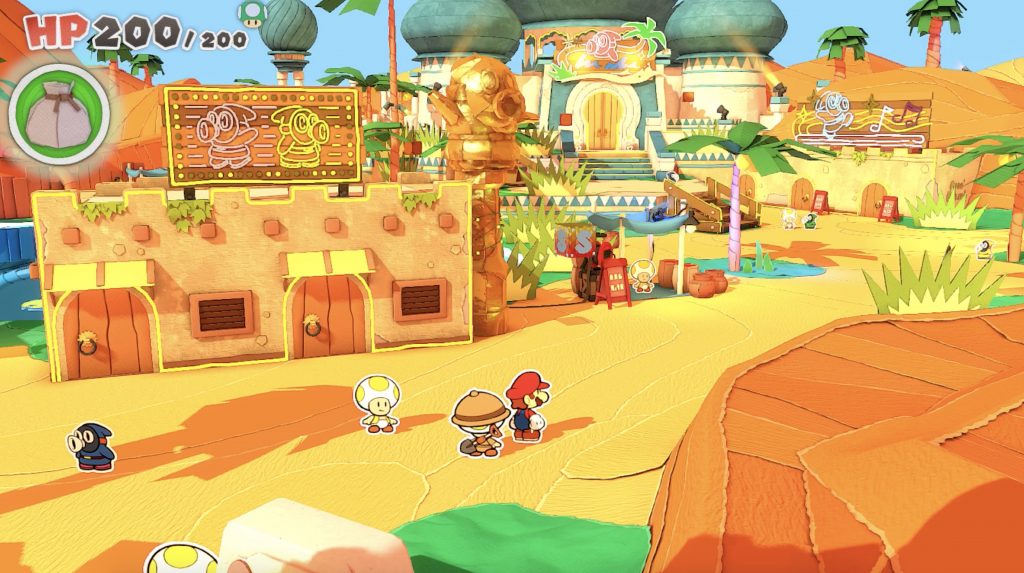
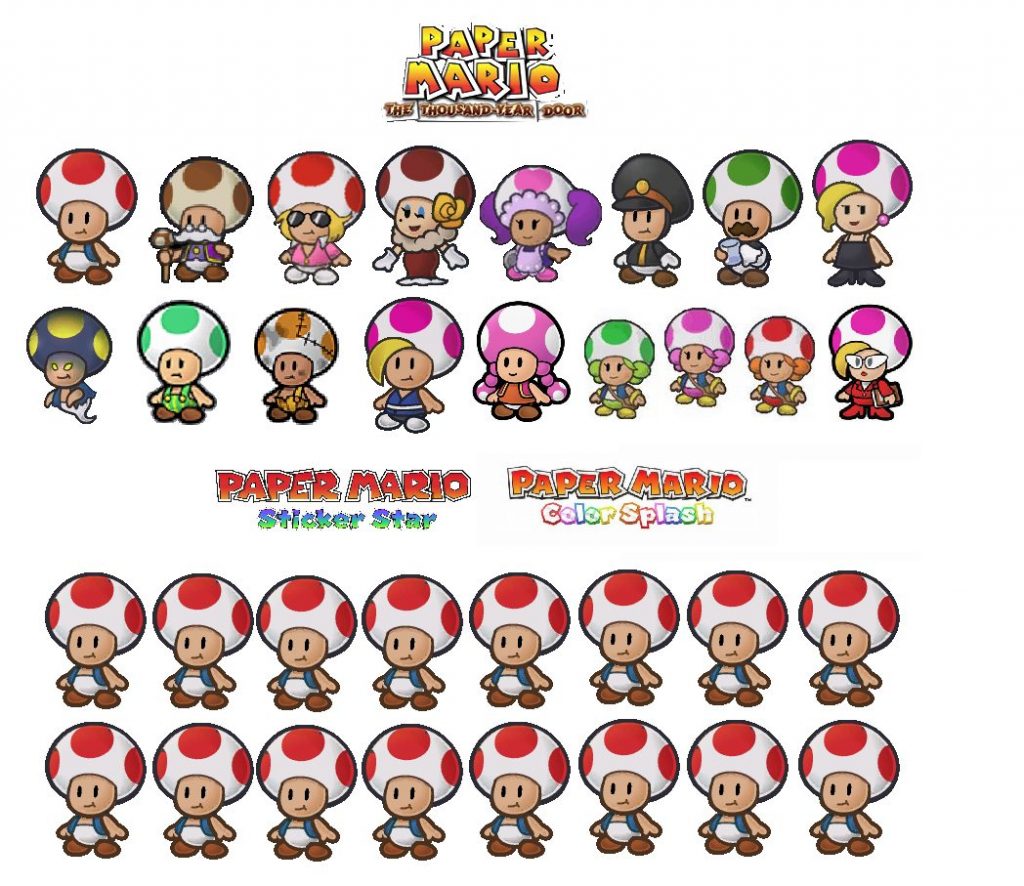
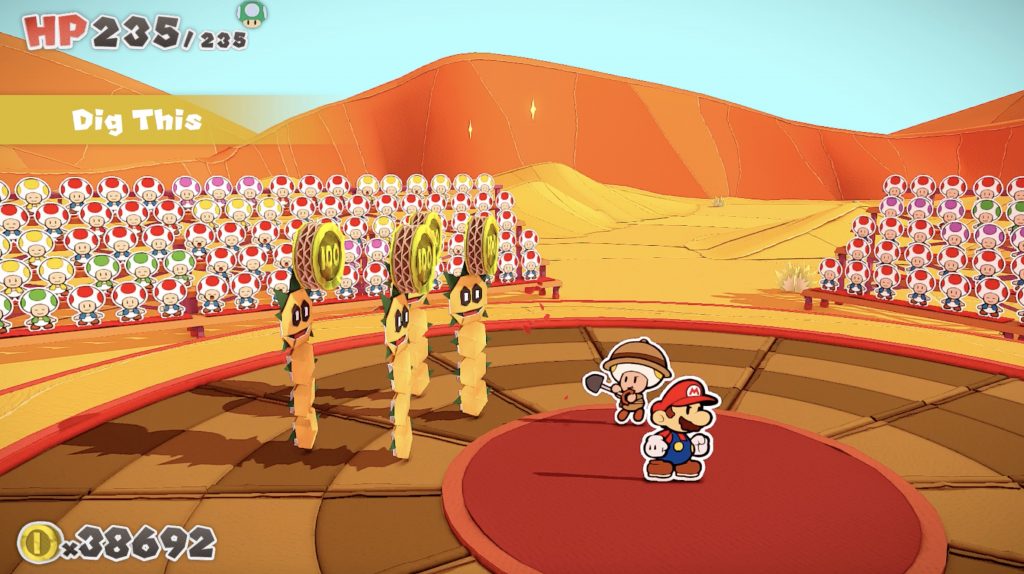
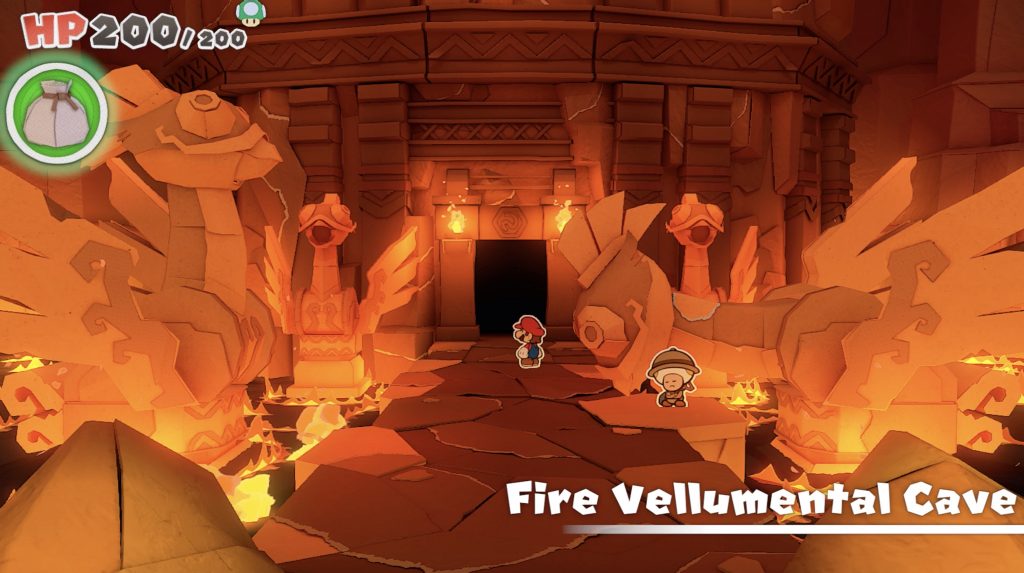
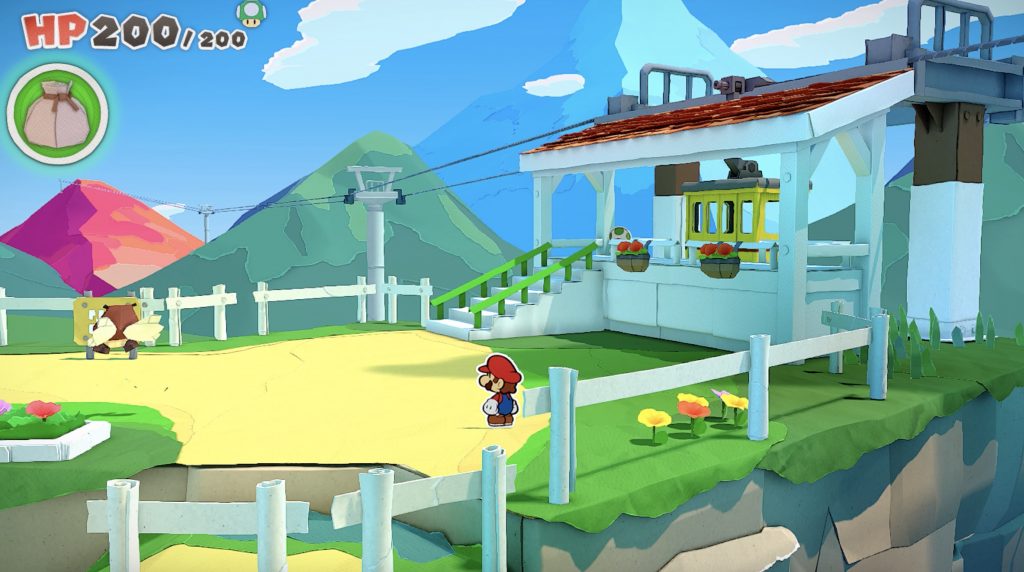

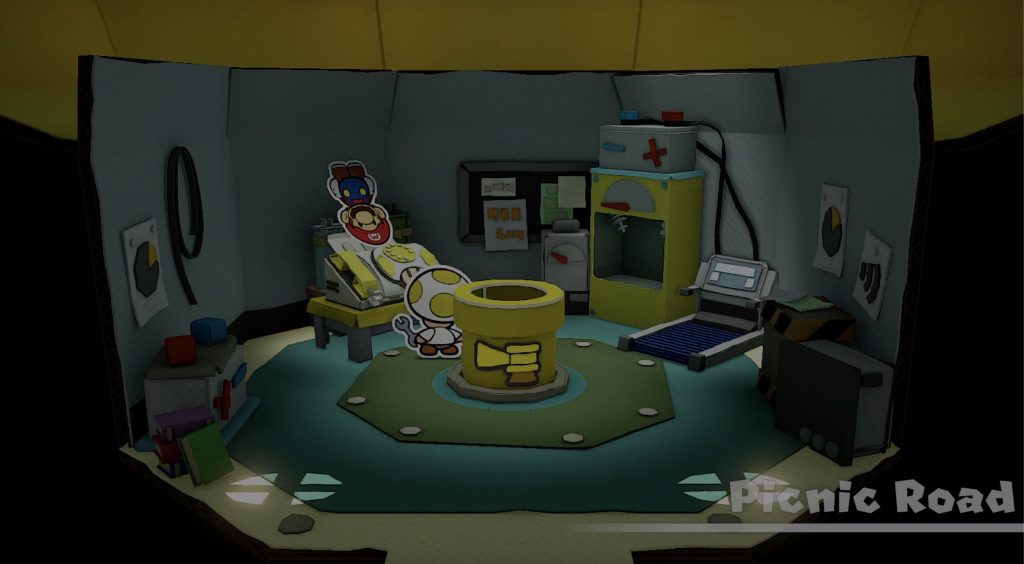
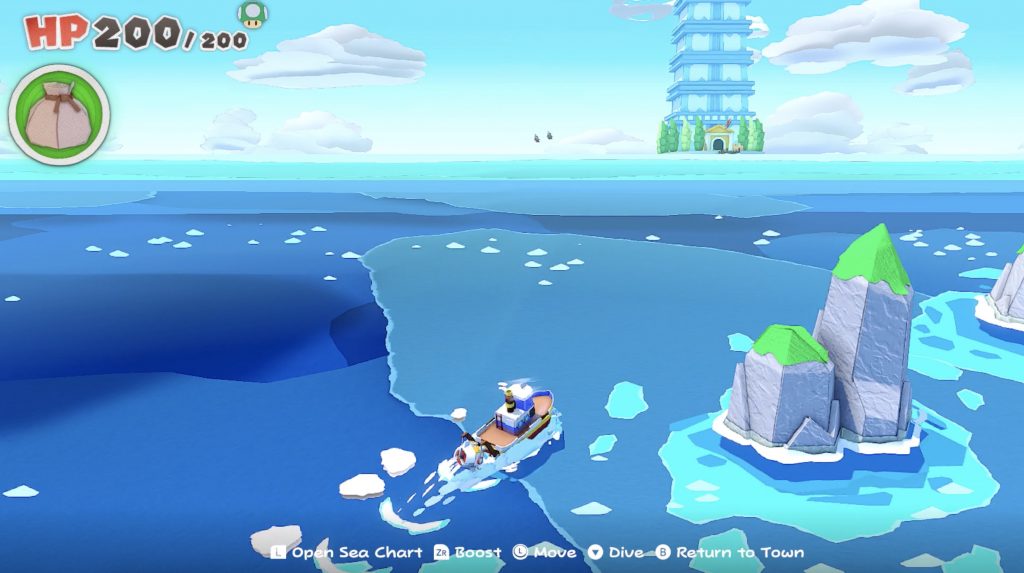
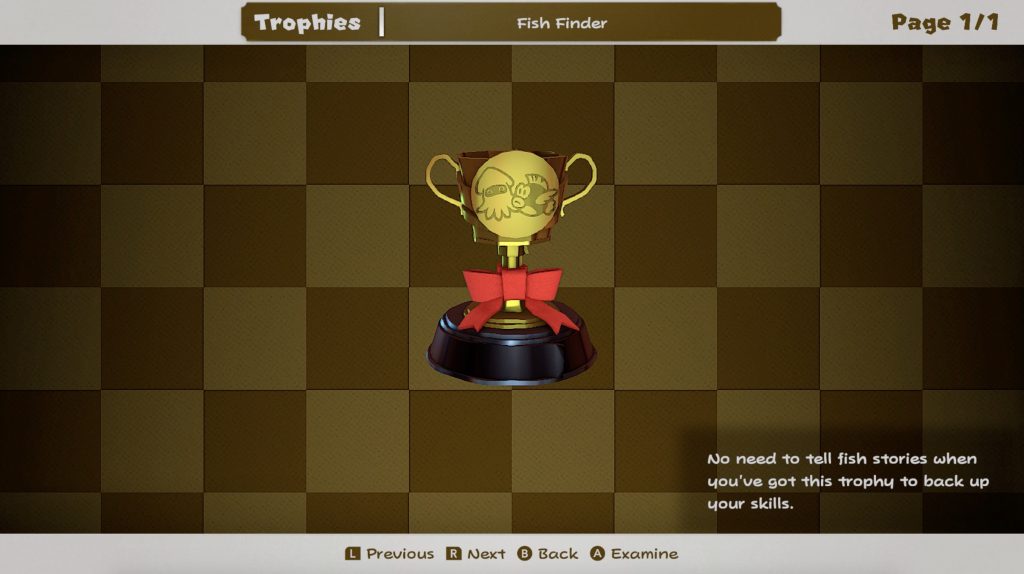

1 Comment
You should be perfect… in every word of the article. You misspelled a word, so you run a mile. Get to work.